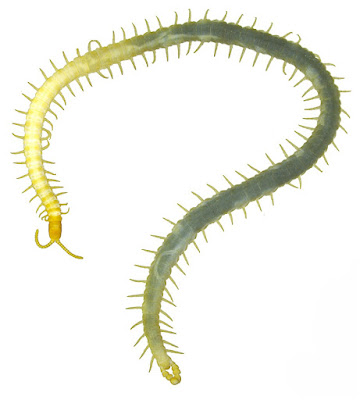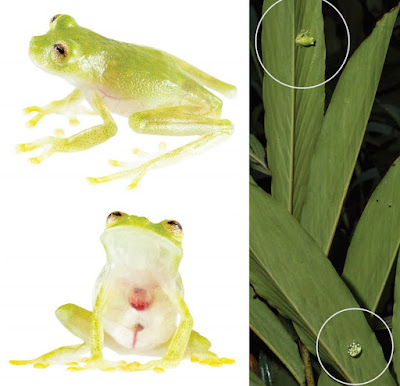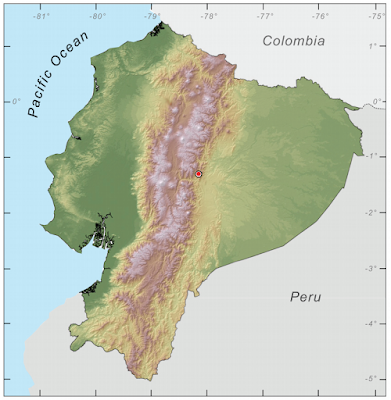[Most Recent Entries] [Calendar View]
Sunday, November 17th, 2019
| Time | Event | ||||||
| 11:34a | [Chilopoda • 2019] Revision of the Neotropical Species of Aphilodontinae (Geophilomorpha, Geophilidae), with Eight New Species and A First Phylogenetic Analysis of the Subfamily
Abstract Aphilodontinae are a well distinct but poorly known group of soil centipedes (Chilopoda: Geophilomorpha: Geophilidae) inhabiting two disjunct areas in South America and South Africa respectively. A comprehensive revision of the Neotropical species is presented based on the examination of >150 specimens, the phylogenetic analysis of the entire subfamily based on 47 morphological characters, and the description of eight new species from Southeastern Brazil. The Aphilodontinae were confirmed a monophyletic clade within Geophilidae and closely related to Geoperingueyia, with which they share synapomorphic characters in the labrum, second maxillae and forcipules. Particular groups of clypeal setae, inconspicuous lateral parts of labrum and coalescent forcipular throchanteroprefemur and femur were recovered as synapomorphies of the Aphilodontinae. Four monophyletic genera are recognized within the subfamily Aphilodontinae Silvestri, 1909 (1908) (= Brasilophilidae Verhoeff, 1908; = Mecistaucheninae Verhoeff, 1925 n. syn.), three exclusively Neotropical and one exclusively South African. The Neotropical genera are: Aphilodon Silvestri, 1898 (= Mecistauchenus Brölemann, 1907 n. syn.; = Brasilophilus Verhoeff, 1908 n. syn.), with ten species (including A. caboclos n. sp., A. indespectus n. sp., A. meganae n. sp., A. pereirai n. sp. and A. silvestrii n. sp.), characterized by a small terminal spine on the ultimate legs, in both males and females; Mecophilus Silvestri, 1909, with two species (including M. tupiniquim n. sp.), characterized by elongated forcipular segment and first leg-bearing segment; Mairata n. gen., with two species (M. butantan n. sp. and M. itatiaiensis n. sp.), characterized by the partial reduction of the distal article of the second maxillary telopodite and a particular shape of ultimate legs, in both males and females. The South African genus, Philacroterium Attems, 1926, comprises eleven known species (including P. weberi (Silvestri, 1909) n. comb., P. caffrarium (Verhoeff, 1937) n. comb., P. porosum (Verhoeff, 1937) n. comb., P. brevipes (Verhoeff, 1938) n. comb., P. bidentatum (Lawrence, 1955) n. comb., P. longipes (Lawrence, 1955) n. comb., P. macronyx (Lawrence, 1955) n. comb., P. maritimum (Lawrence, 1963) n. comb., P. pauciporum (Lawrence, 1963) n. comb. and P. transvaalicum (Lawrence, 1963) n. comb.) and is characterized by vestigial lateral parts of the labrum and the complete suppression of the distal article of the telopodites of the second maxillae. Identification keys are provided for the Aphilodontinae genera and for the species of Aphilodon, Mecophilus and Mairata n. gen. The known occurrence of Aphilodon in Brazil is extended from the states of São Paulo and Mato Grosso to the states of Minas Gerais and Rio de Janeiro, that of Mecophilus from the state of Paraná to the state of São Paulo. Keywords: Myriapoda, centipedes, taxonomy, morphology, phylogeny, biodiversity Victor C. Calvanese, Antonio D. Brescovit and Lucio Bonato. 2019. Revision of the Neotropical Species of Aphilodontinae (Geophilomorpha, Geophilidae), with Eight New Species and A First Phylogenetic Analysis of the Subfamily. Zootaxa. 4698(1); 1–72. DOI: 10.11646/zootaxa.4698.1.1 | ||||||
| 11:43a | [Herpetology • 2019] Hyalinobatrachium adespinosai • A New Glassfrog (Centrolenidae: Hyalinobatrachium) from the Topo River Basin, Amazonian Slopes of the Andes of Ecuador
Abstract A new species of glassfrog (Centrolenidae) is described from the San Jacinto River, an affuent of the Topo River, on the Amazonian slopes of the Ecuadorian Andes. The new species, Hyalinobatrachium adespinosai sp. nov., can be differentiated from all other centrolenids by the combination of its coloration (transparent peritoneum and pericardium) and vocalization (call duration = 0.38–0.44 s, with 9–13 pulses per call; dominant frequency = 4,645–5,001 Hz). However, H. adespinosai sp. nov. is morphologically cryptic with H. anachoretus, H. esmeralda, and H. pellucidum, from which it differs by call traits (in H. anachoretus: call duration = 0.32–0.37 s, with 5 or 6 pulses per call, dominant frequency = 4,670–4,800 Hz; in H. esmeralda: call duration = 0.218–0.257 s, tonal call, dominant frequency = 4,739–5,580 Hz; in H. pellucidum: call duration = 0.112– 0.140 s, tonal, dominant frequency = 5,000–5,710 Hz). Biogeographically, the new species is separated from H. anachoretus by a considerable distance and, also, the Marañon valley. Finally, following IUCN conservation criteria, the status of the new species is considered as Data Defcient. Keywords: Amphibia, Anura, Ecuador, Pastaza basin, phylogeny, Tungurahua Province
Hyalinobatrachium adespinosai new species Suggested English name: Adela’s Glassfrog Suggested Spanish name: Rana de Cristal de Adela Holotype. ZSFQ 1648 (JMG 583, Fig. 2), adult male from riverine vegetation along the San Jacinto River (1.3447°S, 78.1814°W; 1,795 m asl), Tungurahua Province, Ecuador, collected by CRH, REG, and KC on 4 August 2017. Paratypes. ZSFQ 1650–52, 1647, adult males with same data as holotype. Generic placement. The new species is placed in the genus Hyalinobatrachium (Ruiz-Carranza and Lynch, 1991, as modifed by Guayasamin et al. 2009) on the basis of morphological and molecular data. The main diagnostic phenotypic traits of Hyalinobatrachium are: (1) ventral parietal peritoneum completely transparent; (2) digestive tract and bulbous liver covered by iridophores; (3) humeral spines absent; (4) white bones in life; (5) males call from the underside of leaves; (6) females place the eggs on the underside of leaves; and (7) males provide extended parental care. All the aforementioned characteristics are shared by the new species. Additionally, analyses of the mitochondrial 16S gene place the new species as a close relative of other Hyalinobatrachium species (Fig. 1); thus, generic placement in Hyalinobatrachium is unambiguous. Diagnosis. Within the genus Hyalinobatrachium, the new species is diagnosable mainly by having a transparent pericardium. However, the new species is morphologically cryptic with three closely related taxa (H. anachoretus, H. pellucidum, H. esmeralda). Based on comparisons with specimens examined (see Appendix 1), all these species display a similar size and color pattern (pale green dorsum with yellow dots and a transparent venter and pericardium; red heart visible ventrally). However, calls between species diverge noticeably; the major difference is the structure of the call, with two species (H. adespinosai sp. nov. and H. anachoretus) having pulsed calls and the others having tonal vocalizations (Fig. 3; Table 1). The call of H. adespinosai sp. nov. is further differentiated from that of H. anachoretus by being longer, having more pulses per note, and being produced at a higher rate (Table 1). Toe webbing (Toe IV) is less extensive in the new species (21/3 IV 2+) than in H. anachoretus (1+ IV 1+; Twomey et al. 2014). Additionally, the new species and H. anachoretus are separated by considerable distance (airline distance = 473 km), including one of the most important biogeographic barriers in South America, the Marañon valley (see Duellman 1999; Winger and Bater 2015 and references therein). Uncorrected p genetic distances for the mitochondrial gene 16S between H. adespinosai sp. nov. and its closest relatives are summarized in Table 2.
Ecology. All individuals of the new species were found on the underside of leaves of riverine vegetation along the San Jacinto River. The section of river was fast-fowing and had visible rapids. Although the population is locally abundant (as heard from numerous advertisement calls), individuals are very diffcult to observe because they are usually found at the canopy level (4–16 m above ground level). The type series consists of males exclusively; they were calling in the months of July and August. One male (ZSFQ 1648) was apparently guarding an egg clutch containing 22 embryos; both the adult male and the egg clutch were on the same leaf most of the time, but the male also moved to nearby leaves (Fig. 4). Distribution. Hyalinobatrachium adespinosai sp. nov. is only known from the type locality: San Jacinto River (...; 1,795 m asl), Tungurahua Province, Ecuador (Fig. 5). Evolutionary relationships. The phylogenetic analyses recover Hyalinobatrachium adespinosai sp. nov. haplotypes as sister to haplotypes sampled from H. anachoretus and nested within other members of a monophyletic clade comprised of all other sampled species of Hyalinobatrachium (Fig. 1). The most closely related species to H. adespinosai sp. nov. share several morphological traits, including a red heart exposed ventrally (H. adespinosai + H. anachoretus + H. pellucidum + H. yaku). Etymology. The specifc epithet adespinosai honors Adela Espinosa, an Ecuadorian conservationist and board member of the Jocotoco Foundation (http:// www.jocotoco.org). Adela’s work has focused on the conservation of species and ecosystems. The new glassfrog described here is found only within the limits of a natural reserve owned by Adela and her husband, Antonio Páez. We are delighted to recognize Adela’s devotion to nature with this marvelous species. Juan M. Guayasamin, José Vieira, Richard E. Glor and Carl R. Hutter. 2019. A New Glassfrog (Centrolenidae: Hyalinobatrachium) from the Topo River Basin, Amazonian Slopes of the Andes of Ecuador. Amphibian & Reptile Conservation. 13(2) [General Section]: 133–144 (e194). amphibian-reptile-conservation.org/ Resumen.— Describimos una nueva especie de rana de cristal (Centrolenidae) del río San Jacinto, afuente del río Topo, en la vertiente amazónica de los Andes del Ecuador. La especie nueva, Hyalinobatrachium adespinosai sp. nov., se diferencia de todos los centrolénidos por la combinación de su coloración ventral (peritoneo y pericardio transparentes) y las características de su canto (duración del canto = 0.382–0.430 s, con 9–13 pulsos por canto; frecuencia dominante = 4,645–5,001 Hz). Sin embargo, es morfológicamente críptica con H. anachoretus, H. esmeralda y H. pellucidum, especies de las cuales difere por su canto (en H. anachoretus: duración del canto = 0.32–0.37 s, con 5 or 6 pulsos por canto, frecuencia dominante = 4,670–4,800 Hz; en H. esmeralda: duración del canto = 0.218–0.257 s, tonal, frecuencia dominante = 4,739–5,580 Hz; en H. pellucidum: duración del canto = 0.112–0.140 s, tonal, frecuencia dominante = 5,000–5,710 Hz). Finalmente, siguiendo los criterios de la UICN, sugerimos que Hyalinobatrachium adespinosai sp. nov. sea ubicada en la categoría de Datos Insufcientes. Palabras clave. Amphibia, Anura, Cuenca del Pastaza, Ecuador, flogenia, Tungurahua Province |
| << Previous Day |
2019/11/17 [Calendar] |
Next Day >> |









